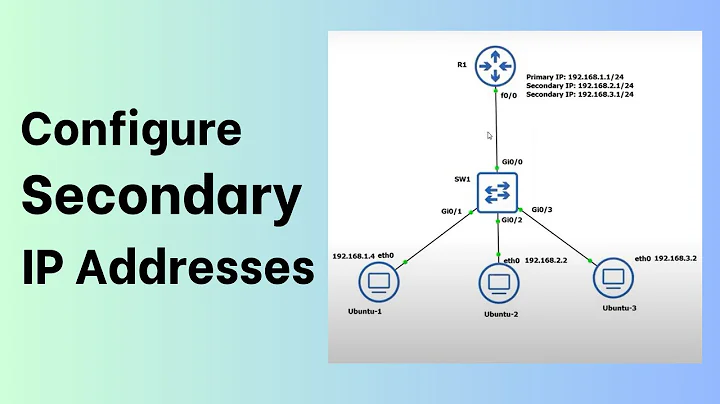Get the interface and ip address used to connect to a specific host (ip)
Solution 1
You can try "route" to print you're routing table which will show you the destination networks and gateways for your various interfaces.
If the IP addresses don't help you determine the interface easily, run "traceroute," after running route, look at the first hop and compare it with the associated gateways from "route," and voila - that's your interface.
#route
Kernel IP routing table
Destination Gateway Genmask Flags Metric Ref Use Iface
145.67.4.0 switch47 255.255.255.0 U 0 0 eth0
192.168.1.0 localrouter 255.255.255.0 U 0 0 eth1
#traceroute <destination>
1 switch47.ba.foo.com (145.67.4.1) 0.5 ms .....
2 xxxxx.xxx.xxxx (xxx.xxx.xxx.xxx) 0.Xms. ...
Solution 2
route -n get www.yahoo.com
I am running os x 10.6.8
Solution 3
You can use ip route get to find and output the route which would be used for a specified destination. The output should include the interface and source address.
% ip route get 8.8.8.8
8.8.8.8 via 172.16.4.1 dev eth1 src 172.16.4.36
Solution 4
I'm not sure if this is correct, but netstat might do it. It shows local address of established connections.
# netstat -nt
Proto Recv-Q Send-Q Local Address Foreign Address State
...
tcp 0 0 192.168.1.61:44114 64.34.119.101:80 ESTABLISHED
tcp 0 0 192.168.1.61:36036 107.21.205.201:80 ESTABLISHED
Related videos on Youtube
brainkz
Updated on September 18, 2022Comments
-
 brainkz almost 2 years
brainkz almost 2 yearsI am currently trying to translate the following Verilog command into Simulink:
assign A = {{14{B[15]}},B[15:0],2'b00};This line sign-extends the 16-bit vector and multiplies it by 4. For example, given the 16-bit input
B = 0100110110101101the output would be 32-bitA = 00000000000000010011011010110100:The Simulink this operation can be performed by the following blocks:
But I thought, there might be an easier way to do this. Any ideas?
-
Nicolò Fuccella about 12 yearsI did end up using route. Thank you. Here was my final command:
ifconfig `route get <host> | grep "interface: " | sed "s/[^:]*: \(.*\)/\1/"` | grep "inet " | sed "s/.*inet \([0-9.]*\) .*/\1/". This works, but any suggestions / optimizations are welcome. -
Univ426 about 12 yearsAhh ok, I was just gonna say, I would really recommend mgorven's approach listed here, but if you don't have ip on Mac OS, I'm glad this helps.
-
bahamat about 12 yearsThis is the correct definitive way to determine which local IP was used.
-
Amos Shapira almost 8 yearsThat's what I was looking for when I got here. Good job.





